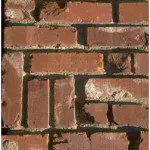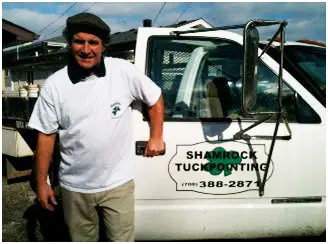14 Nov 2012
Too Cold for Tuck Pointing in Chicago?
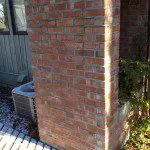
Temps Should be Above 40 Degrees for Tuck Pointing in Chicago
Generally, tuck pointing in Chicago is best done when the surface material is above freezing and future temperatures are above 40 degrees. If you can’t wait until the weather gets warmer, you can try to keep the area warm enough using tarps and portable heaters.
If facing cold temperatures, there’s a possibility that the mortar won’t generate enough heat especially when wind and frost are a factor. While curing, ice crystals may form jeopardizing the mortar integrity. Last year the weather was so mild we were able to tuckpoint through December without any problems. If you think you would like to get the job done now, give us a call and we will assess the situation. If it’s best to wait until Spring, we’ll let you know.
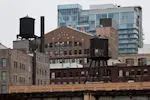
The program is designed to help owners of commercial and industrial properties and/or tenants within specific Chicago TIF districts to repair or remodel their facilities. You’ll have to wait for work to be completed all expenses are paid to qualify, but because grants do not have to be repaid, it’s definitely worth the wait. You can find out if your property is located within an eligible TIF district by calling (312) 360-3300. Applications are selected by lottery and processed by SomerCor 504 Inc., a federally certified Small Business Administration lender.
Residential property, residential components of mixed used buildings and property leased to fast-food chains and certain other businesses are not eligible for the program. There are some other restrictions as well:
Industrial Tenants: A maximum of more than 100 full time equivalent employees.
Commercial Tenants: Maximum sales of $1.5 million annually for the prior three years, or equivalent average.
Landlords: A maximum personal net worth of $4.0 million and a maximum total liquidity of $300,000.
For complete requirements call SomerCor 504. For questions about the cost of tuckpointing your Chicago business building call Shamrock Tuckpointing, located in Alsip, Ill. (708) 388-2871.
13 Jun 2012
How to Find the Right Masonry Contractor
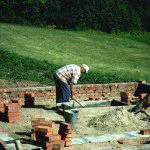
Call the contractors and ask them to describe their business. Listen for how long they have been serving customers and for the size and duration of projects they’ve worked on. This will give you an idea if it’s the right fit.
Questions to Ask a Masonry Contractor
You may want to ask more questions to learn if this contractor is the best one for your work. Try these.
Do you have testimonials or recommendations from previous clients? A good contractor will supply you with names.
What mortar mix do you use? This may be important especially when restoration work is involved.
What preparation is needed? Make sure the cleaner used is appropriate for your masonry. You don’t want anything damaged by water or abrasive blasting.
Will cold or hot weather affect my masonry project? In cold climates like Chicago, tuckpointing is not recommended during winter since cold can damage the mortar. However, the area can be masked off with a tarp and positioned with heaters to protect it.
How will the joints be prepared for the new mortar? Ask about the use of power tools, which can damage masonry. Loose mortar should be raked out by hand and brushed, then watered down. This allows the new mortar to retain moisture as it cures.
What style of tuckpointing will be used? Concave, flat, European? Ask the tuckpointer to explain the difference between the three.
By asking these questions you will learn how to find the right masonry contractor for your tuckpointing or masonry job.
When it comes time to replace old mortar from the joints of masonry, brick or stone in your Chicago older home you may have multiple concerns. Will it maintain the appearance of the original? Will it strengthen the structure and provide better resistance to Chicago weather? Is it important to maintain the chemical properties of the original mortar? Tuckpointing mortar in Chicago older homes is a masonry restoration process.
In older homes, every brick was laid by hand and the mortar filled with a trowel. Over time, those mortar joints need repair (cut, clean and refill with fresh mortar).
Protect the History of Your Home
If the house was built between 1873 and 1930 the mortar probably includes lime and sand mixes augmented with Portland cement. Original construction techniques offer clues on how to maintain the home’s original appearance if that’s your goal.
Strength and permeability (rate of vapor transmission) as well as a visual inspection of the old mortar will show the tuckpointing professional what kind of mortar mix and techniques should be applied. There are exceptions, but the mortar on homes dating from the mid-1950s on have a fairly homogeneous texture and color.
Identifying the sand and color allows the tuckpointing contractor to match or come very close to matching the original mortar. Sand is the largest ingredient by volume and is what gives mortar its color. If necessary, modern pigments can be added to the mortar at the job site. Mortar should be measured and mixed carefully to assure visual and physical characteristics.
Matching the chemical properties of the original mortar is not necessary. As long as the new mortar matches the original in color, texture, tooling and sand used, it’s a good result. Components of historic mortar (before 1930) varied a lot because they were made of natural materials. Modern mixes are manufactured so they can be standardized and easily replicated.
Prevent Damage
To prevent damage and ensure proper masonry restoration, replacement mortar should be softer or more permeable than the masonry work. And it should be no harder or more impermeable than the original mortar. If the joint is properly prepared, a good bond forms between the new mortar and the adjacent surfaces, strengthening the structure.
What to Avoid:
- Masonry cements at hardware stores are not recommended for older homes because they produce too strong of mortars that can damage historic masonry.
- Modern chemical additives may have detrimental effects on historic masonry. Antifreeze compounds may present salts that lead to efflorescence.
- Power tools in the hands of unskilled tuckpointers can result in damage. Specialized automatic tools used in conjunction with hand tools by a skilled craftsman will reap the best results.
Mortar joints in homes are called the wall’s “first line of defense.” To maintain the structure and appearance of the home tuckpointing should be completed approximately every 20 to 30 years. The right tuckpointing mortar in Chicago older homes ensures a successful masonry restoration by protecting the visual and physical integrity of the masonry.

